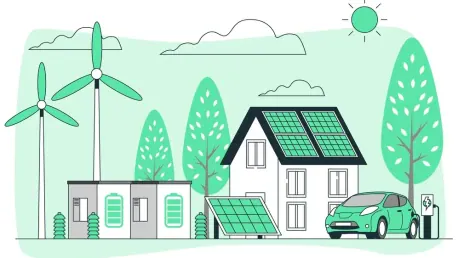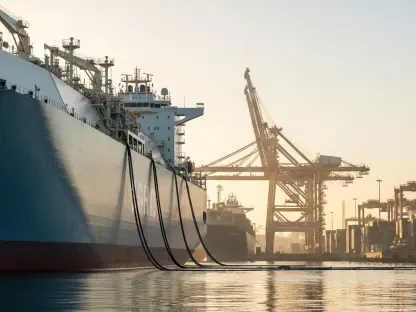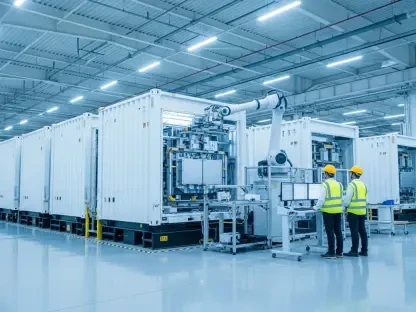The year 2024 has seen an unprecedented surge in global energy demand, almost doubling the recent average. This increase is driven by significant growth in electricity consumption worldwide. This article delves into the factors contributing to this surge and explores whether it signals a lasting trend in the global energy sector.
The Growth of Global Energy Demand
Unprecedented Surge in 2024
Global energy demand exhibited a notable increase of 2.2% in 2024, well above the annual growth of 1.3% seen over the past decade. Emerging and developing economies were primarily responsible for this rise, accounting for over 80% of the growth. This considerable uptick was remarkable in the historical context of the past decade, where energy demand growth had been more measured. It underscores the expanding economic activities and rising living standards in these economies.
Despite this overall increase, China demonstrated slower growth in energy consumption compared to previous years, growing by less than 3%, which was half the rate in the preceding year of 2023. This slower growth was markedly below China’s average for the past decade, reflecting the country’s evolving economic structure and energy efficiency initiatives. China’s relationship with energy demand continues to be pivotal due to its substantial contribution to global figures, suggesting significant global implications even with reduced growth.
Advanced Economies’ Reversal
In an intriguing turn of events, advanced economies reported an increase in energy consumption for the first time in years, with an aggregate rise of nearly 1%. This reversal was attributed to a variety of factors, including higher electricity use influenced by global weather patterns and new technological adoptions that necessitate more energy. This pattern broke from a trend of declining energy demand in these economies, suggesting a potential reevaluation of consumption expectations.
The unexpected rise in energy consumption in advanced economies could be linked to environmental and economic factors, such as the need for more intense cooling systems in record high global temperatures. Furthermore, the adoption of new technologies, including digital infrastructure and electric vehicles, contributed to this rise, indicating a complex interaction between economic progress, technological innovation, and environmental changes.
Driving Factors Behind the Surge
Power Sector Dominance
The power sector was the main driver of the increased energy demand, with electricity consumption soaring by 4.3%, nearly double the prior decade’s average. This spike was fueled by a combination of factors, including record high global temperatures that led to increased cooling needs and the overall rise in industrial activity. The electrification of transport also played a significant role, with the car industry increasingly shifting towards electric vehicles, thereby bolstering global electricity consumption.
Another critical contributor to the surge in electricity consumption was the rapid growth of data centers and artificial intelligence technologies. As businesses and services continue to digitalize, the demand for data processing and storage has escalated, necessitating greater energy use. Likewise, AI technologies require substantial computational power, further pushing the boundaries of electricity consumption. This trend not only highlights the technological evolution driving energy demand but also underscores the need for adaptive energy generation strategies.
Influence of New Technologies
Rising electricity consumption was also driven by the rapid growth of data centers and artificial intelligence. These technologies require massive computational power and energy, leading to significant increases in electricity use. With the growing dependence on digital infrastructure, the energy footprint of such technology sectors is set to rise, necessitating sustainable solutions to manage this growth. Additionally, emerging innovations in automation and smart technologies are further driving the electricity demand.
The growing popularity of electric vehicles has significantly contributed to the increase as well. EV sales rose by more than 25%, influencing global demand patterns. This shift towards electric mobility is pivotal, as it reduces the dependency on fossil fuels while elevating the need for electricity, highlighting the transition of energy demands within the transportation sector. As consumers and industries continue to embrace EVs, the energy sector must adapt to ensure sustainable and efficient electricity supplies, ultimately shaping future energy trends.
Sustainable Energy and Its Role
Expansion of Renewable Energy
To meet the rising energy demands, the supply of low-emission energy sources such as renewable power and nuclear energy increased significantly. 2024 saw the installation of a record 700 gigawatts of new renewable power capacity, continuing a 22-year streak of renewed growth. This expansion is pivotal, as it underscores the global commitment to sustainable energy sources, reducing reliance on fossil fuels and contributing to environmental conservation efforts.
The surge in renewable energy adoption encompassed various technologies including solar, wind, and hydroelectric power. These sources played vital roles in meeting the growing electricity demands while mitigating carbon emissions. Consequently, renewable energy sources jointly contributed 40% of the total global electricity generation for the first time, marking a significant milestone. This shift not only addresses the immediate energy consumption needs but also supports long-term environmental objectives, reinforcing the importance of sustainable energy investments.
Role of Clean Energy Technologies
The adoption of clean energy technologies like solar PV and wind played a crucial role in limiting CO2 emission growth. Although global CO2 emissions rose slightly, advanced economies managed to reduce their emissions, indicating progress in decoupling economic growth from emissions. Clean technologies’ vital role in mitigating the adverse environmental impacts of energy consumption further emphasizes the need for ongoing investments and development in the renewable sector.
The proliferation of electric cars, heat pumps, and other efficient technologies was also instrumental in curbing emissions growth. Advanced economies recorded a reduction in CO2 emissions by 1.1% to 10.9 billion tonnes, reaching levels last seen 50 years ago. This ongoing decoupling reflects strategic efforts in energy efficiency, technological innovation, and policy measures. It signifies a conscious shift in energy practices towards more environmentally sustainable methods, shaping future energy consumption patterns and highlighting the importance of clean energy advancements.
Fossil Fuels and Their Evolution
Natural Gas Ascendancy
Among fossil fuels, natural gas experienced the most significant demand increase, rising by 2.7%. This uptick is notable compared to the past decade’s average and represents a pivot towards less carbon-intensive natural gas use. The growing reliance on natural gas stems from its comparatively lower carbon footprint and the increased availability of natural gas-fired generation, reinforcing its role as a transitional fossil fuel.
The increase in natural gas demand also aligns with the broader energy shift towards sustainable sources, offering a relatively cleaner alternative while renewable and nuclear generation capacities expand. This trend highlights natural gas’s strategic position in the evolving energy market, balancing the immediate energy needs and environmental considerations. Additionally, investments and advancements in natural gas technologies further enhance efficiency and reduce emissions, helping pave the way for a sustainable energy transition.
Decline of Oil Demand
In 2024, global energy demand has skyrocketed, nearly doubling the recent average rates. This dramatic increase is primarily due to substantial growth in electricity consumption across the world. As societies continue to develop technologically, their energy needs rise to power households, industries, transportation, and digital infrastructures. Contributing factors include the rapid electrification of transportation, expanding digital economies, and an ever-growing population with changing electricity consumption patterns.
Additionally, as developing nations advance, their energy requirements catch up with those of more developed countries, further boosting global demand. There is also an increasing reliance on energy-intensive technologies, such as data centers and smart devices. This article delves into the reasons behind this surge, examining whether it is a short-term spike or a sign of a lasting shift in energy consumption trends. Understanding these dynamics is crucial for planning future energy production, managing resources, and ensuring sustainable development in the face of growing global demand.









